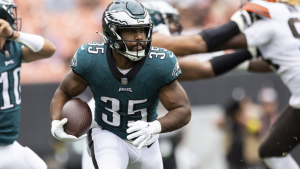The Fantasy Sports Trade Association estimated that 42 million people aged 12 and over living in the US and Canada played in fantasy leagues in 2014.
Basically, these are, of course, residents of the United States. 80% of Canada’s over 3 million fantasists play hockey. Also, 80% of the 7 million British fantasists play football (European). The number of dreamers in America is on the rise. Now 22% of men aged 18 to 49 have played fantasy. The fantasy sports market is valued at $3-4 billion annually.
The idea of distributing players among the participants and holding a competition based on statistical indicators appeared shortly after the end of the Second World War.
Wilfred Winkenbach invented fantasy golf in the second half of the 1950s, in which each participant recruited a team of professional golfers and the winner was the one whose team at the end of the season had the smallest number of strokes. Golf is the easiest fantasy game to manage: just keep an eye on a dozen players on your team and no more complications. But such a game was not widely used then.
In 1960, Harvard University sociologist William Gamson opened the Baseball Seminar, where colleagues formed teams to score points for the following statistics: Batting average (BA), Runs batted in (RBI), Earned run average (ERA), Wins. Gamson later brought the fantasy game idea to the University of Michigan, where some of the faculty became involved in the game.
Also in the early 60s, the first known fantasy football (American football) league appeared:
The Greater Oakland Professional Pigskin Prognosticators League, which consisted of eight teams. George Blanda became the first player drafted in the Fantasy Football League in 1963.
The creation of the first fantasy league, really similar to the modern Rotisserie league, is attributed to the journalist Daniel Okrent and dates back to 1980, although according to some sources, this already existed in 1976. Sports journalists participated in the league. They predicted statistics, playing time and player injuries. During the MBL strike in 1981, when there was practically nothing to write about, fantasy became a popular topic.
Gradually, fantasy began to penetrate into other sports. By 1988, about 500,000 fantasy players were playing in the US.
In 1972, the EMSBL (East Meadow Strat-o-Matic Baseball League) was created, which has been in existence for 43 seasons and is considered the oldest ongoing fantasy league in the world.
The development of fantasy in the 80s led to the emergence of a service serving this hobby. There was a special newspaper, Baseball Weekly, paying more attention to statistics. John Benson published a book in 1989 and developed one of the first draft modeling computer programs. Alex Patton published the book Patton’s 1989 Fantasy Baseball League Price Guide in 1989 and his fantasy dollar values were published in the weekly baseball collection.
Interest grew not only in baseball. The Fantasy Football Index became the first annual fantasy football guide in 1987. Sports Magazine debuted in 1989 as the first regular publication to cover more than one fantasy sports. Fantasy Football Weekly was launched in 1992 and had $2 million in revenue by 1999. A large number of companies have sprung up specializing in computing statistics for fantasy leagues and faxing the results.
In 1993, USA Today includes a weekly fantasy baseball column.
The most famous fantasy journalist was John Hunt. He gathered in his league from well-known sports experts.
Between 1991 and 1994, the fantasy services market went from $1 million to $3 million.
The main opportunities for the growth of fantasy sports were created by the development of the Internet in the mid-1990s. New technologies have removed restrictions on participation, as now statistics can be quickly collected on the site, news and information have become available.
In early October 1995, Molson Breweries, as part of an advertising campaign, hosted a fantasy hockey game on the site.
Drafts were organized, subsequent player exchanges, signing players from the pool. Disputes were considered by the commission agent by e-mail. The site was updated daily NHL statistics. On May 24, 1996, Molson Breweries won the 1995 International Digital Media Award for Best Website.
In the mid-1990s, fantasy service companies began to move to the Internet. The final advent of the era of online fantasy occurred in 1997, when two websites opened
